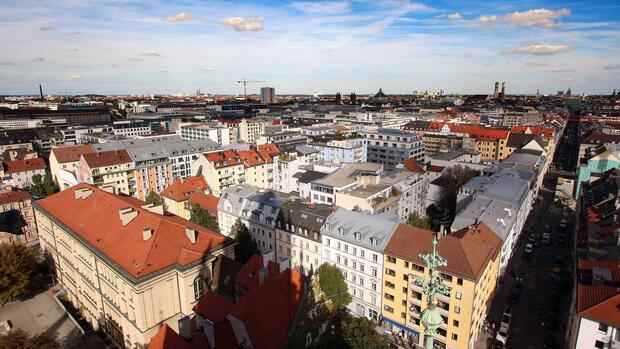Among the most expensive districts are Frankfurt am Main and Munich, each with 3.08 euros per square meter for the total average operating costs.
(Photo: imago images / Ralph Peters)
Frankfurt It always causes trouble: the utility bill. Once a year, millions of tenants receive a utility bill from the homeowner – also known colloquially as ancillary costs bill. But the dispute is unlikely to get any smaller in the foreseeable future: The ancillary housing costs in Germany will continue to rise.
“It is relatively clear that the ancillary costs will continue to rise,” said Michael Voigtländer, real estate expert at the Institut der Deutschen Wirtschaft (IW), when he presented a new ancillary costs report on Tuesday. “I do believe that there will be a nasty surprise for one or the other tenant when they hold the utility bill for 2021 in their hands.”
This is bad news for tenants and homeowners. What do you have to be prepared for? For 2021, Frank Wojtalewicz, CEO of Deutsche Invest Immobilien, which is preparing the report together with the IW, expects an average increase in ancillary costs of seven to eleven percent.
Since heating costs would tend to rise due to CO2 taxation and rapidly increasing gas and oil prices, tenants would be confronted with rising warm and cold operating costs at the same time, warned Wojtalewicz. “And that in a market situation in which rents have been going up for years anyway due to the high demand,” adds the manager.
Top jobs of the day
Find the best jobs now and
be notified by email.
For many residents, the ancillary costs become more or less a second rent. According to the calculations of the new ancillary housing costs report, the ancillary housing costs in Germany meanwhile increase the total rent by an average of 32 percent. In regions with a low basic rent level, the ancillary housing costs made up as much as 50 percent of the total rent.
In addition to the property tax, the experts also take into account the fees for street cleaning, garbage disposal, sewage, building cleaning and heating, including hot water, when compiling the comparative figures.
Strong regional differences
However, the regional differences are considerable. Above all, the costs of the so-called cold ancillary costs – i.e. without heating and hot water – vary significantly depending on the size of the city and municipality: in large cities with more than 500,000 inhabitants, tenants raise an average of 1.28 euros per square meter, in smaller municipalities it is around 70 cents.
According to the report, the total operating costs for the 401 German rural districts and urban districts range on average from 3.30 euros per square meter of living space in Memmingen in the Allgäu to 1.86 euros in Dingolfing-Landau. Among the most expensive districts are Frankfurt am Main and Munich, two of the top seven cities, each with EUR 3.08. The other top seven cities are also in the most expensive fifth of all rural districts.
The large differences between the cold operating costs at different locations on the one hand and the energetic quality of residential buildings on the other hand show the great potential for lowering these ancillary costs, said Wojtalewicz.
The report recommends that expensive municipalities learn from municipalities with a more affordable cost structure and utilize efficiency reserves. “When it comes to the amount of ancillary costs, the federal government and the municipalities sometimes have a great deal of leeway,” warned Voigtländer.
More: Where tenants have the highest and lowest costs
